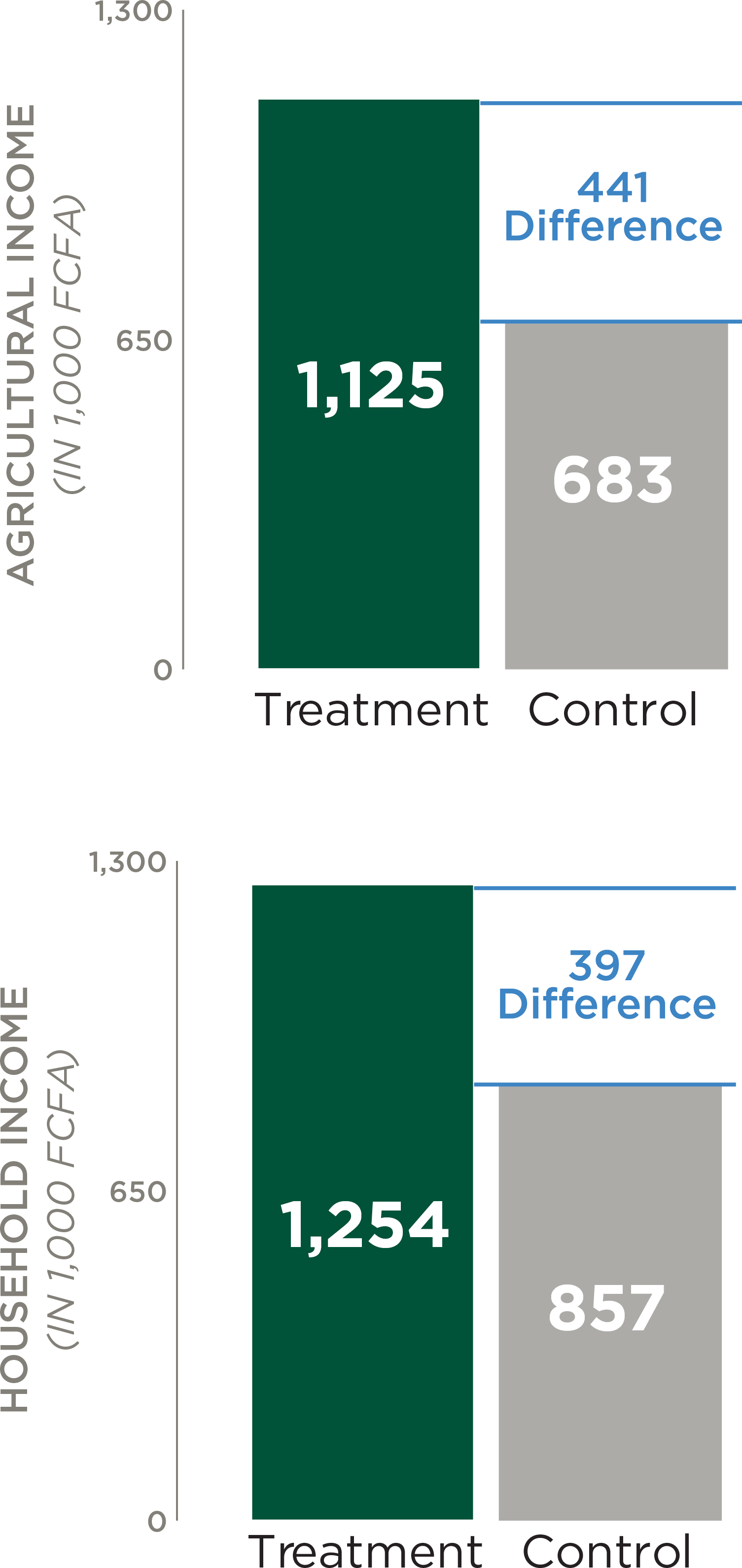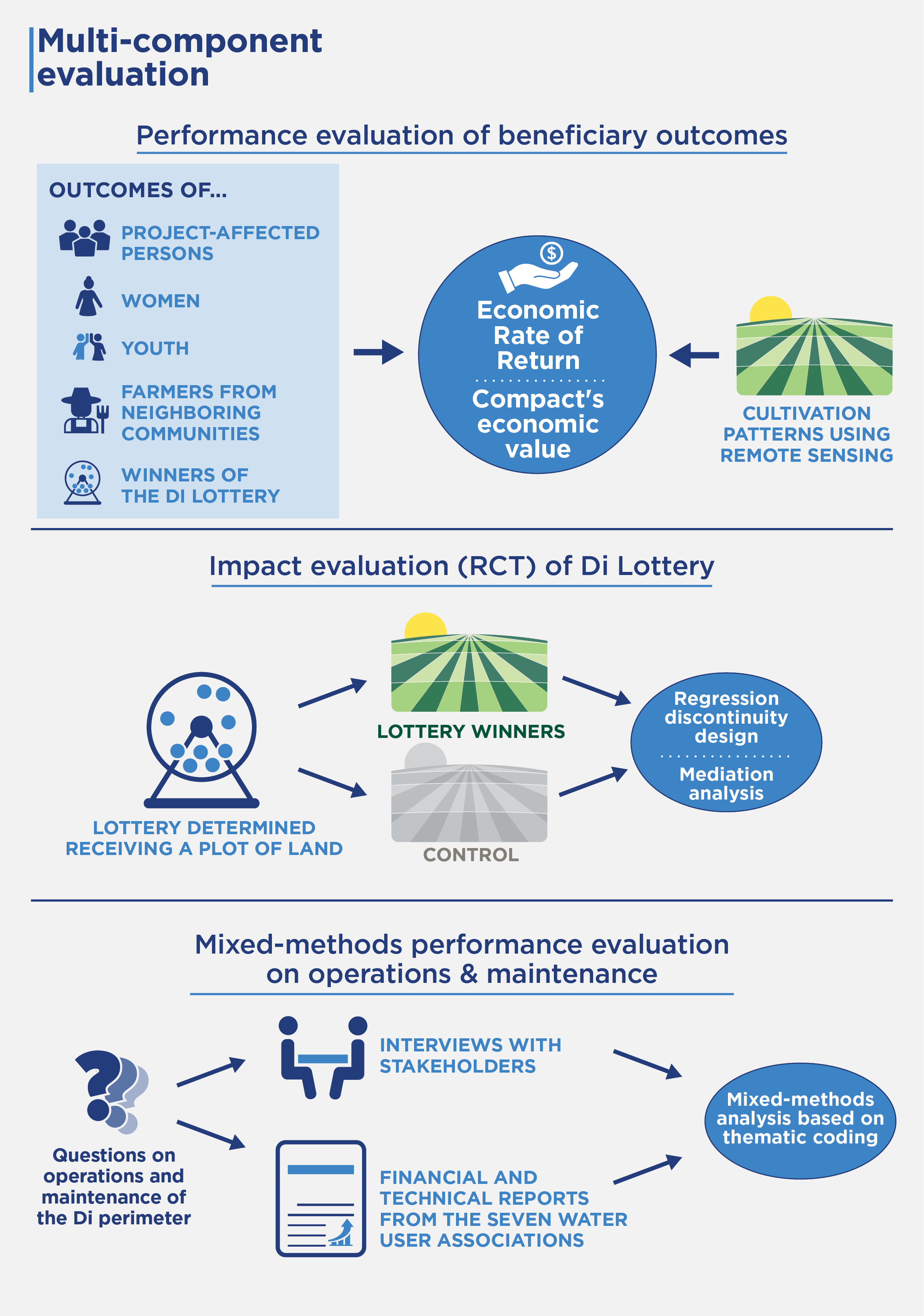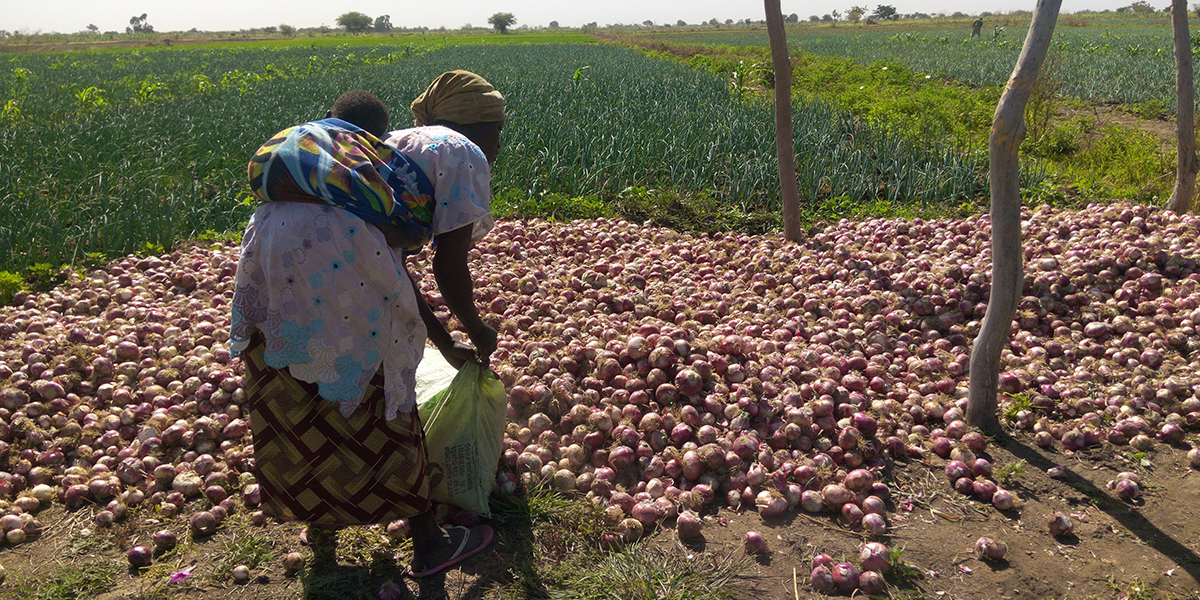Program Overview
MCC’s $480 million Burkina Faso Compact (2009-2014) included the $142 million Agricultural Development Project (ADP) to support increased agriculture production, incomes, and land tenure. The ADP financed the construction of a 2,246 hectare irrigated perimeter in the Di Department, supported improved water resource management, and provided farmers with training, irrigable land, and land titles. The activities were based on the theory that reliable access to irrigation, productive land, and secure land use rights would allow farmers to farm year-round, diversify into higher-value crops, and obtain higher profits and incomes.
Download French translated evaluation brief.
Evaluator Description
MCC commissioned Mathematica to conduct an independent final impact evaluation of the Agricultural Development Project. Full report results: https://data.mcc.gov/evaluations/index.php/catalog/198.
Key Findings
Agricultural Outcomes
- Cultivated land more than doubled in the rainy season and increased 20-fold during the dry season, generating higher production, profits, incomes, and food security for farmers.
- Incomes of farmers that received land were up to 50 percent higher than a randomized group of farmers that did not receive land.
- Although farmers’ profits increased substantially as a result of irrigation and land tenure, these increases were not high enough to justify the project costs of $45,000 per hectare.
Land Outcomes
- Beneficiaries feel secure about their tenure. Most possess formal land documents, but some are confused about their rights to sell or transfer land.
- Beneficiaries are more likely to invest in their land, lease land, and apply for a collateralized loan than non-beneficiaries.
Irrigation Infrastructure
- Newly constructed pumping stations and concrete infrastructure are in good condition, but earthen components and valves are not. Maintenance of pumping stations is adequate, but water user associations struggle to maintain drains, particularly in sectors with rice plots.
- The perimeter’s lifespan is estimated at 17 to 36 years. The original estimate was 25 years.
Evaluation Questions
This final impact evaluation was designed to understand:- 1
Whether irrigation and land tenure:
- Improved agricultural outcomes (area cultivated, agricultural productivity, profits, and incomes)?
- Improved land tenure security, land conflict, and land markets?
- 2 What the current state, functioning, and maintenance of the irrigation infrastructure is, and the expected lifespan of the perimeter given current levels of maintenance?
Detailed Findings
Agricultural Outcomes

Impacts on agricultural and household incomes
Beneficiaries of the project were split into two groups. The first were the original owners of land in Di Department who received smaller, but irrigated plots as compensation for their lost land due to the irrigation infrastructure. The remaining land on the perimeter was distributed to a) women, youth, and other farmers from the area, and b) applicants through a lottery.
The original owners are better off than before the construction of the perimeter: three-quarters reported earning higher agricultural profits than before perimeter construction, and nine out of ten reported higher food security. Lottery Beneficiaries made 75% higher agricultural profits leading to 50% higher household incomes relative to those who did not win a plot.
Land Outcomes
Farmers feel secure about their tenure on the perimeter: about three-quarters report possessing formal land documents, and about 85 percent believe that it is very unlikely that they would lose access to their land within the next five years. Very few farmers reported any land conflicts. Not all households are fully aware of their rights to transfer land. Most understand their right to bequeath or rent out their land—and about seven percent did so in 2019. About one-quarter know that they have the right to sell their land or leasehold. Women and youth who received small garden plots on the Di perimeter—of about 1/20th of a hectare—rate their land tenure security as high, similar to other groups who received land.Compared to farmers who did not win the Di lottery, lottery winners are twice as likely to have made investments in their land, and are also more likely to rent land, apply for a loan, and use land as collateral.
Irrigation Infrastructure
Sustaining the benefits of access to irrigation over decades relies on functioning infrastructure which requires institutions capable of, and with sufficient financial resources for, operations and maintenance. The project set up and supported water user associations (WUAs) with beneficiaries paying water user fees.Six years after the end of construction, pumping stations are in good condition and canals have some damage but are highly functional. However, drains and valves have significant damage, which has exacerbated flooding on parts of the perimeter. Access routes are somewhat damaged but mostly still functional.

Pumping station
At current levels of maintenance, stakeholders estimated the overall remaining lifespan of earthen infrastructure (such as drains and small canals) at 10 years, and 10-30 years for pumping stations and concrete components (bigger canals). Based on the original estimate of a total lifespan of 25 years, the remaining lifespan would be 18 years. Estimates of infrastructure longevity have decreased since the interim evaluation and vary by sector.
Economic Rate of Return
MCC considers a 10 percent economic rate of return (ERR) as the threshold to proceed with an investment.- 4.2% Original ERR
- 3.8% Compact Close-out ERR
- -2.4% Evaluation-Based ERR
The primary reason for the lower than expected ERR is that the area cultivated in onions—the most profitable crop—was lower than in the original model; and the profits for onions and especially tomatoes were lower than anticipated. Given the cost of the construction was approximately $45,000 per hectare, even with high benefits to beneficiaries, the profits per hectare needed to be substantially higher to meet the original ERR target.
MCC Learning
- Large-scale irrigation projects for smallholder farmers may have difficulty meeting the ERR 10% hurdle rate since the costs per hectare are quite high.
- MCC should engage in institutional reform and capacity development efforts earlier and more substantially.
- The long-term operations and maintenance of irrigated perimeters depend on payment enforcement and savings mechanisms.
Evaluation Methods

2020-002-2501


